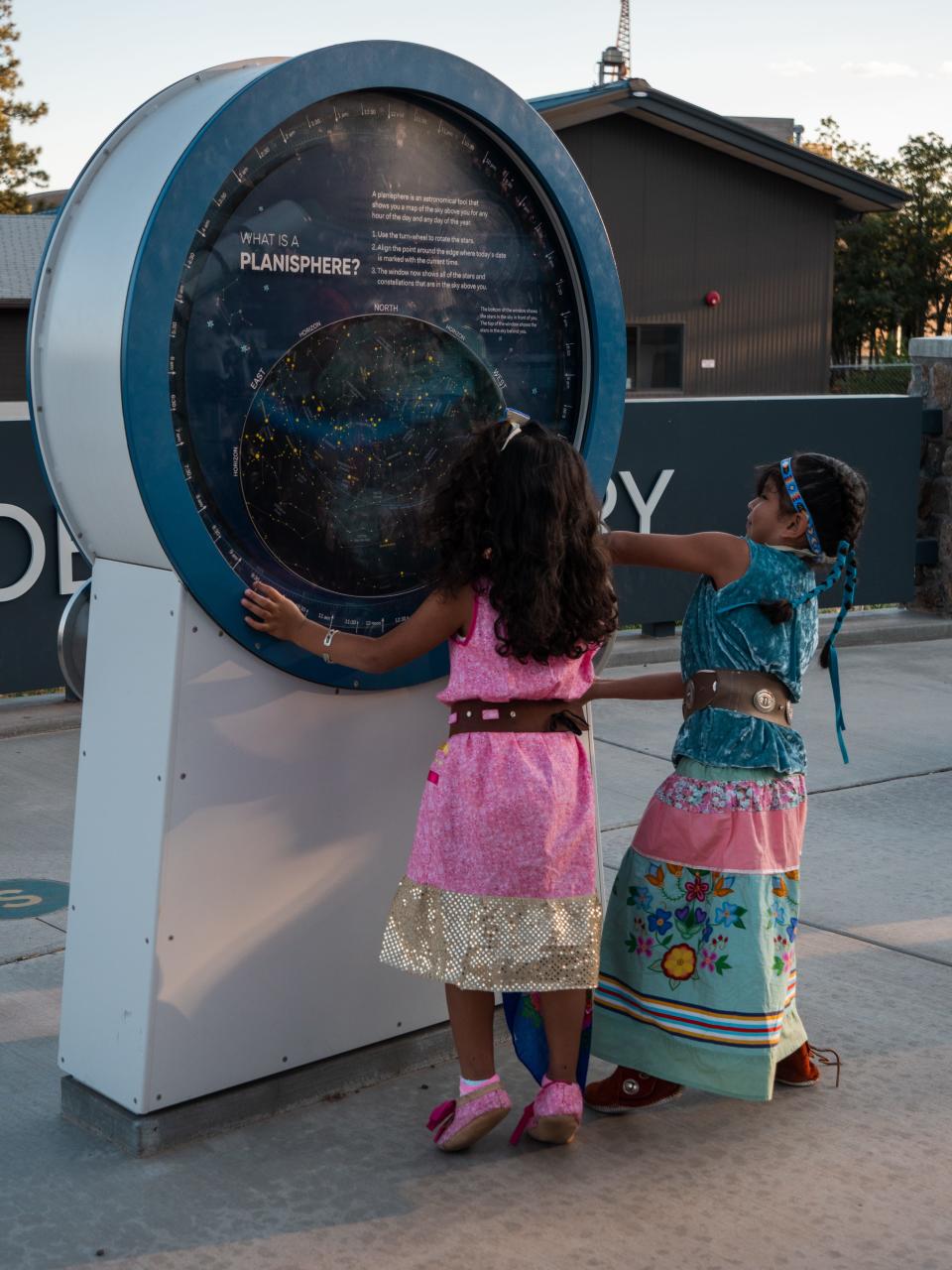Lowell Observatory to share 'Native skies' stories with livestream event
- Oops!Something went wrong.Please try again later.
Since time immemorial, Indigenous peoples with a deep knowledge of astronomy have paid close attention to the skies.
Observatory sites that track the seasons by watching the stars move across the night sky abound in the West and the Southwest. Native peoples use the stars to determine optimal planting and harvest times, seasonal changes and wildlife migrations.
Now, a contemporary observatory and a nonprofit focusing on the Grand Canyon will share some of that ancestral knowledge with the public in an online event. The Lowell Observatory and the Grand Canyon Conservancy will debut "Native Constellation Storytelling for Winter Skies" on Wednesday at 8 p.m.
Autumn Gillard, cultural resource manager for the Paiute Indian Tribe of Utah, will share wisdom passed down through generations, shedding light on the deep cultural significance of these celestial arrangements in a conversation with Lowell's historian Kevin Schindler.
Leonid meteor shower 2023: Here's when it peaks and the best places to see it in Arizona
The audience will be able to request views of deep space objects live as the observatory streams images from its Giovale Open Deck Observatory, which features six telescopes suitable for public viewing. A telescope equipped with an integrated video camera will be used for the livestream.
Gillard will share the Paiute perspective and some stories associated with the starry shapes adorning the night skies.
“Indigenous science stands on equal footing with Westernized science; they are one and the same,” said Gillard in a statement. She said that understanding the universe and people's connections to the sky is far more than science. It's one way to connect to her heritage. "It's a means of embracing my identity as a Native woman.”

Lowell Observatory works to engage with Native communities
Lowell Observatory's founder, Percival Lowell, is credited with the research that led to the discovery of Pluto in 1930.
Lowell also studied the planets Mars and Uranus. Although his theory that life had existed on Mars was debunked by NASA's Mariner missions in the mid-20th century, the facility Lowell built continues as a research institute and public education space.
The observatory and Grand Canyon National Park are also part of DarkSky International, an initiative that is working to eliminate nighttime light pollution and provide velvety-black skies for people to once again observe the ever-moving starscape and even the Milky Way, just as Native peoples have done over the millennia.
The man who ultimately discovered Pluto was Clyde Tombaugh. He was offered a job at the Lowell after building a reflecting telescope using a crankshaft from a 1910 Buick and discarded parts from a cream separator. He used the telescope to make detailed illustrations of Jupiter and Mars, which he sent to the facility asking for comments.
Cody Half-Moon, Lowell's marketing director, said the livestream presentation is part of the 129-year-old observatory's larger initiative to engage with Native communities who have cultural and historic ties to the region.
The observatory operates a Native American astronomy outreach program to enhance STEM education in Native communities. It shares information about upcoming celestial events, such as eclipses, with communities so they can prepare according to their cultural beliefs.
Half-Moon said only stories and facts deemed sharable by the tribe would be explained, and Lowell would not realize any profit from the event.
"Those aren't our stories to tell," she said.
But, she said, these events are important to show the parallels between Indigenous and Western astronomy and to illustrate a vital point: "We wouldn't have astronomy if we didn't pay attention to the night skies."
Visit the Grand Canyon Conservancy's YouTube site on Wednesday at 8 p.m. to view the presentation.
A 'Devil Comet' passing over Earth: Here's how to see it
Debra Krol reports on Indigenous communities at the confluence of climate, culture and commerce in Arizona and the Intermountain West. Reach Krol at debra.krol@azcentral.com. Follow her on X, formerly Twitter @debkrol.
Coverage of Indigenous issues at the intersection of climate, culture and commerce is supported by the Catena Foundation.
My articles are free to read, but your subscriptions support more such great reporting. Please consider subscribing today.
NOTE TO PRODUCERS: for the print version, this is a better link to use: https://www.youtube.com/@GrandCanyonConservancy
This article originally appeared on Arizona Republic: Lowell Observatory to share Native stories online

